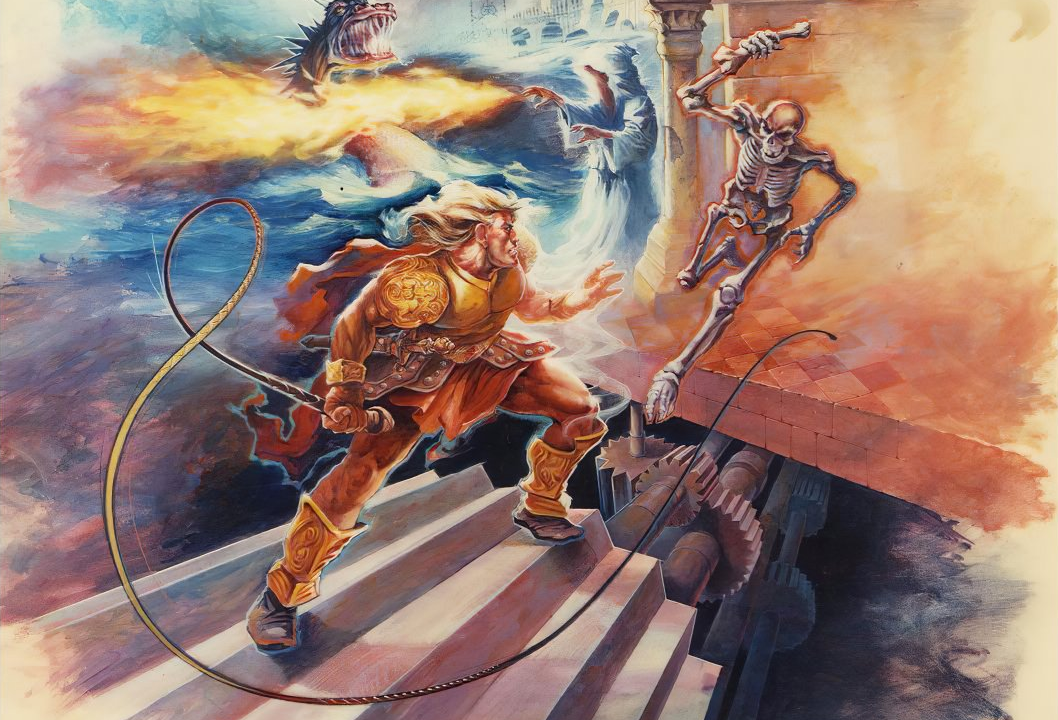

Features
Castlevania III: Dracula’s Curse is a Masterpiece in 8-Bit
Whether on the Famicom or NES, Castlevania III is an 8-bit masterpiece.
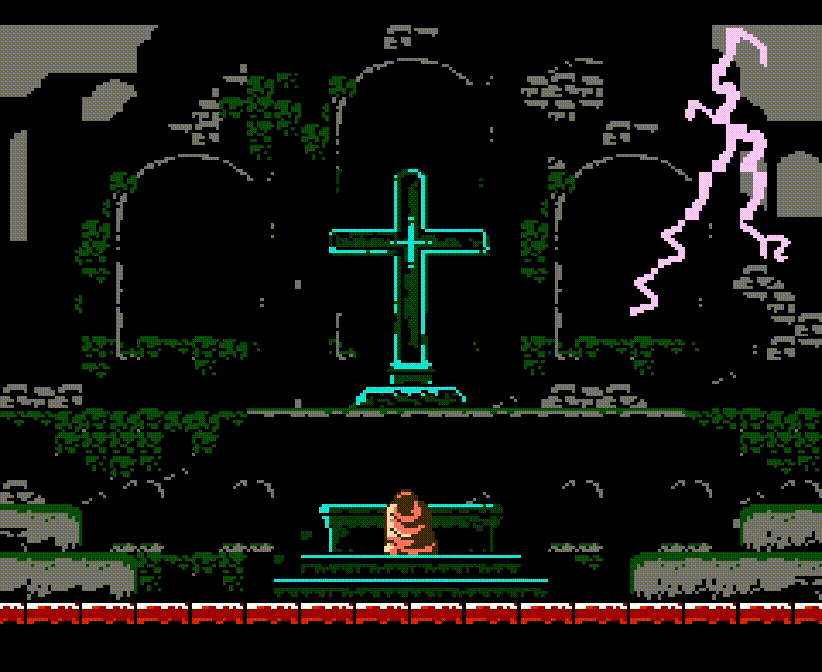
As technology advances and gaming only becomes more complex, it pays to look back on the classics and marvel at what exactly they managed to pull off without the modernities that have almost homogenized the medium. The Nintendo Entertainment System’s impressive library of games highlights just how much developers were able to accomplish in 8-bit alone, both artistically and mechanically. 8-bit gaming can be just as immersive, engaging, and fun as its modern counterparts. If not more so depending on the game. Castlevania III: Dracula’s Curse embodies this notion better than most titles — a masterpiece of music, sprite-work, and pure game design.
“Akumajou Densetsu represents the zenith of quality in both music and gameplay for the Famicom.”
– 360leo, Developer on Castlevania III: Dracula’s Curse
Dracula’s Curse recaptures the original Castlevania’s knack for level design while innovating just as much as Simon’s Quest did. The end result is a sequel that feels familiar and pushes its series forward toward greater heights. The level design demands your full attention at all times. Enemies and bosses are as creative as they are dangerous. The presentation is jaw-dropping, pairing an outstanding score with beautiful 8-bit visuals. Most importantly, the gameplay loop juggles a near-perfect balance of difficulty & fun. Castlevania III might just be the NES at its best.
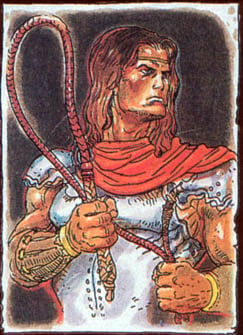
Dracula’s Curse is set 125 years before the events of the first Castlevania, starring Simon’s ancestor, Trevor, in the Belmont clan’s first major confrontation with Count Dracula. Trevor controls more or less how Simon does in the first game. He comes to a full stop when you whip, his jump direction can’t be changed mid-arch, and he walks with a slow stride that keeps the gameplay loop flowing at a deliberate pace. The Vampire Killer strikes anything directly in front of you and can be upgraded twice over by finding Morning Stars. Trevor can also use five different Sub-Weapons–the Dagger, Axe, Cross, Holy Water, and Stopwatch–to round out his battle capabilities.
Unlike Simon’s quests, Trevor need not travel alone. Castlevania III features a partner system that allows you to swap between Trevor and one of three party members at the press of a button. Every character plays differently, from how fast they move, to which Sub-Weapons they have access to and how their attacks work. Grant Danasty is a thief whose family was killed by Dracula. Grant actually plays slightly differs between regions. In the international version, he attacks with a close-range stab. In the Japanese version, he throws a knife directly in front of him. Consequently, the NES gives Grant the Dagger as a Sub-Weapon whereas he only has the Axe and Stopwatch on the Famicom. Both regions have their advantages.
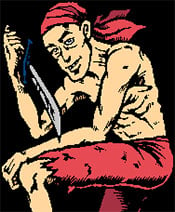
The NES stab is fast enough to keep most enemies stunned on contact. Quickly spamming the attack is a great way of killing sturdier enemies provided you can spare the confidence. The Famicom throw gives Grant what is essentially an infinite long-range Sub-Weapon–weak but effective enough to get around most foes. When it comes down to it, though, Grant’s real strengths lie outside of combat. He’s fast, can jump higher than any other character, change his direction mid-jump, climb walls or ceilings by holding up on the D-Pad, and fit into tight spaces to get items no one else can reach. All his skills offer platforming far more flexibility while also adding some new flavor to the typical Castlevania gameplay loop. Grant is acrobatic, unlike any other playable character in the series.
Sypha Belnades is a powerful witch posing as a man. She attacks in a vertical swing using her wand. Like Grant, Sypha can really only attack at close range, but her wand strikes are fast enough to stun enemies if you button mash. She’s also faster than Trevor, but not so fast where she offers a distinct advantage when it comes to platforming like Grant. With no other apparent benefits, Sypha comes off sub-par at first glance, but she makes up for her setbacks by sporting the strongest set of Sub-Weapons in the game.
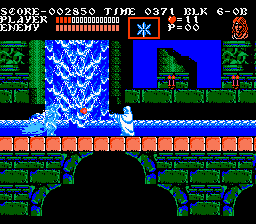
Sypha can use three different elemental spell books, all of which have extremely useful effects. Ice Magic shoots out a wave of ice shards that freezes enemies and objects on contact. You can use an enemy’s frozen body as a makeshift platform, or just shatter them to pieces. A little creativity can get you around certain screens as intended. Ice Magic can even kill Red Skeletons and temporarily freeze water. Fire Magic fires out a burning lash directly in front of Sypha, not unlike the Vampire Killer. Its reach and speed make it a great tool for taking out enemies from a distance. Lastly, Lightning Magic launches three bolts that hone in on any enemies on-screen. You can kill just about any boss or enemy from a safe distance.
The dhampir formerly known as Adrian Tepes, Alucard is the half-human, half-vampire son of Count Dracula. He attacks by tossing out crystals from underneath his cape. Like Trevor’s Vampire Killer, Alucard can upgrade his attack twice by finding Morning Stars. Each upgrade adds a diagonal shot that increases the crystal’s spread. Unfortunately, the crystals are fairly weak even when fully upgraded. Alucard’s attacks actually do less damage if you button mash and his range is fairly poor. Coupled with his slow speed and no available Sub-Weapons other than the Stopwatch, he’s rarely the best choice for stages.
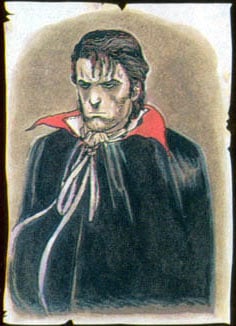
Alucard’s usability in battle is far more situational than Sypha or Grant, but he does make a good partner if you like playing as Trevor but struggle with endgame platforming. He can transform into a bat by pressing Down on the D-Pad together with the jump button. There are some drawbacks–bat form drains Hearts very quickly and it only takes a single hit to transform out–but this allows you to circumvent entire screens. Some of the hardest platforming challenges in the game can be outright avoided if you have Alucard and enough Hearts.
“The curse of Dracula has begun. The fate of Europe lies with Trevor.”
– Castlevania III: Dracula’s Curse, Prologue
Along with adding new playable characters, Castlevania III introduces branching paths. These branches determine the length of your overall playthrough, which and how many stages you visit, and who joins Trevor on his journey. Each branch presents you with an upper and a lower path that sends you to different stages. There are two different routes into Dracula’s Castle altogether, with one route having its own minor split before they converge. Branching paths are a dynamic way of making progression feel like a proper journey and offering the player agency over their experience.
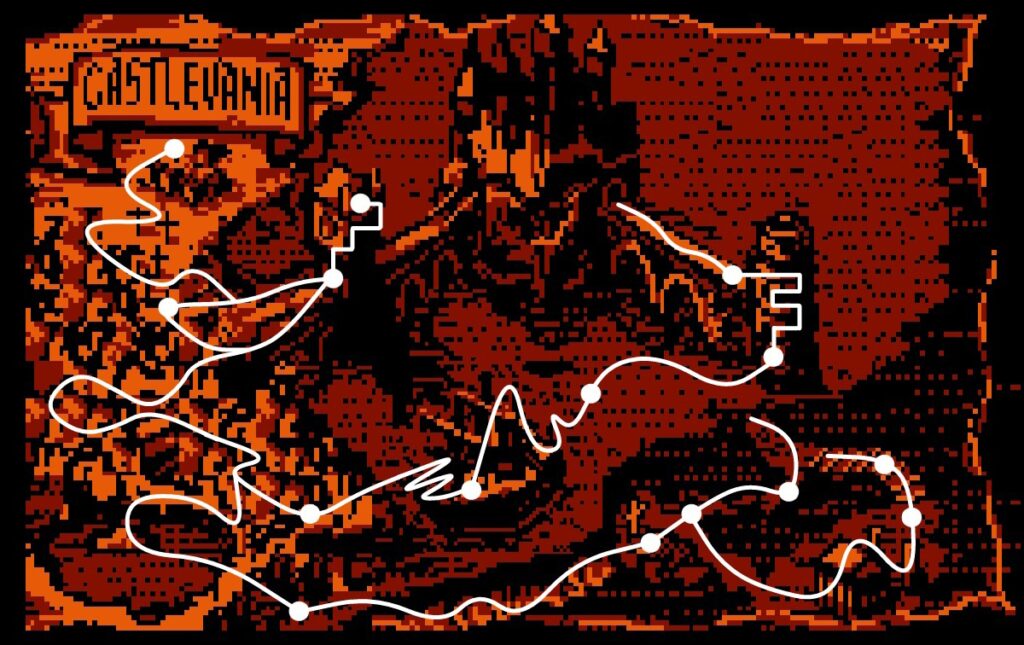
The first split happens after completing the Town of Wallachia (Block 1). The upper path takes you to the Clock Tower of Untimely Death (Block 2) while the lower path lets you skip right towards the Forest of Darkness (Block 3). Heading to Block 2 first means you still need to play Block 3 after, but you get to unlock Grant early into your playthrough. Block 3 lets you skip the second stage entirely in lieu of sticking with just Trevor for a bit longer. Regardless of which path you pick, the next route split in Block 3 leads to two vastly different mid-games.
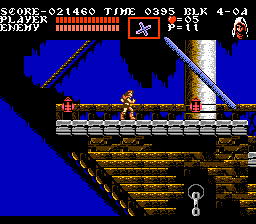
The upper path as you continue into the forest and traverse the surface to get to Dracula’s Castle, while the lower path leads to a marsh that takes you deep underground to breach the castle from down below. Sticking to the surface is actually easier and gets you to Dracula’s Castle in fewer stages. You also get your next companion almost right away and Sypha is a much stronger partner than Alucard. The underground has harder platforming challenges and enemy placement and is overall more demanding, perfect for players who want a real challenge. Alucard can bypass some difficult platforming sections but isn’t particularly useful against enemies or bosses. Unless you keep Grant around, the underground route requires some real mastery of the controls.

The surface’s stages are set inside man-made structures taken over by Dracula’s forces. You set sail on a Haunted Ship (Block 4A), scale a Cursed Tower (Block 5A), cross a Moat Bridge of Peril (Block 6A), and enter through the Castle Courtyard (Block 7A). The underground’s stages are aesthetically tied together by ruins, caverns, and areas long untouched by man. You start in a Murky Marsh (Block 4) that leads right into Alucard’s Cave (Block 5). The cave then splits into two paths: straightforward into the Underground Catacombs (Block 6X) or the Sunken City of Poltergeist (Block 6Y). Whichever stage you choose, both lead into the Underground Mines (Block 7) where you begin your assault on Dracula’s Castle. The castle itself has no branching paths and is a straight shot right to Dracula’s chamber, taking you from the Main Hall (Block 8), to the Inner Halls (Block 9), and finally Dracula’s Final Clock Tower (Block A).
“As Trevor, you will find several locations throughout your journey where the road forks (sorry, no spoons) in two directions. On these Paths of Fate, you must make a choice–which way do you go, George? Which way do you go?”
– Castlevania III: Dracula’s Curse, English Manual
Castlevania III’s level design is the hardest of the NES trilogy, but also the strongest. The game wastes no time when it comes to upping the difficulty. Medusa Heads and trick platforms that give out from underneath when you jump on them are introduced just a few screens in. You’re expected to pay careful attention to what’s ahead of you while keeping your reflexes sharp. Some stages are almost overwhelmingly hard on a first playthrough, but practice and persistence help build the skills you need to overcome Dracula’s Curse. Early stages also have a more relaxing difficulty curve, allowing you to ease into a run before things start to get overwhelming, but not so relaxing where you can coast by.
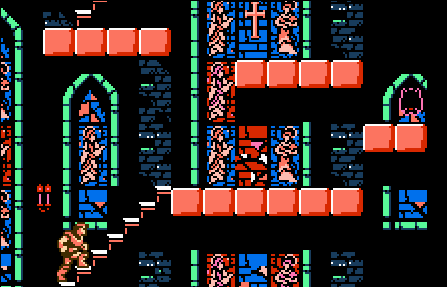
Even the earliest stages push you to learn the controls, master the mechanics, and hone your reflexes. You need to physically backtrack out of the Clock Tower of Untimely Death to get to the Forest of Darkness. Every screen you conquered has to now be completed in reverse, and most are full of bottomless pits and enemies. You’re taught early that a single mistake means plummeting to your death. Block 3-01 teaches you to find a rhythm between moving and attacking. Owls swarm out from behind trees, flying into the sky before plunging down to attack. The whole screen is manageable, but not if you hesitate amidst the chaos. It’s important these lessons are instilled early because Castlevania III only gets harder and harder as you near Dracula.
More than a few stages pile on the tension and demand your laser focus if you want to survive. The screen inches upwards every few seconds as you climb up the Cursed Tower in 5-0B. You’re forced to move and think quickly, using what bits of the level design you can see to find safe footing. Block 7-0B flips the set piece on its head, requiring you to race down the screen as the ceiling threatens to crush you. Crumbling floors and bottomless pits mean you have to plan your jumps strategically while moving non-stop. Block 9-01 pits you against an unending gauntlet of Harpies dropping Fleaman. You have to time your strikes perfectly while always pressing on confidently or you’ll quickly get overwhelmed by hopping hunchbacks.

The enemy placement feels relentless at times, and you’ll need to learn from your mistakes if your reflexes can’t keep up with the constant carnage. 4-01 opens with a flood of frogs who hop out of the marsh as you try to platform over it. Respawning Mummies in 5-06 punish players who stand their ground and fight instead of just pushing forward. The second-to-last screen of 9-02 is a tense staircase climb where you have to avoid Bone Pillar fireballs while Flying Gargoyles lunge across the screen right at you. Yet as overwhelming as the difficulty curve gets, nothing feels unconquerable or impossible to bypass. There’s a solution to every roadblock: even if it’s just your own persistence to play better.
It’s easy to forgive how hard some stages can get when each Block is home to an amazing set piece after set piece. Castlevania III’s presentation is simply spectacular. Every path leads you to inspired settings teeming with atmosphere. Gears, cogs, and machinery in the Clock Tower are constantly rotating in the background. The Forest of Darkness is cast against a hypnotic backdrop where lightning strikes periodically behind a stream of blue and white lights. Broken columns and abandoned temples stand in ruins behind the Sunken City, each screen sandwiched between overgrown vegetation and clear blue water. A golden sun can be seen starting to rise up the purple sky as you enter Dracula’s Castle. The walls are weathered, backgrounds are textured, and careful shading makes the world tonally darker. Transylvania comes alive in all its gothic, 8-bit glory.
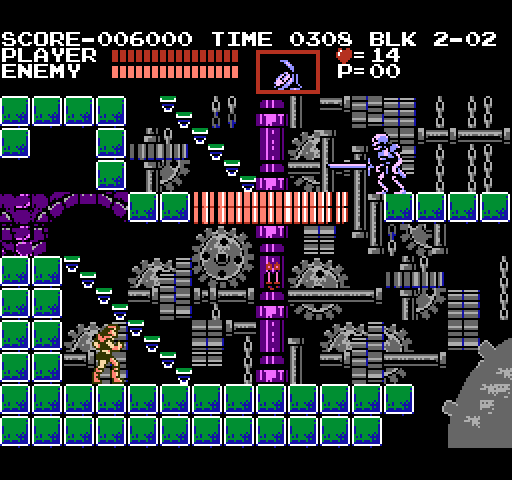
Castlevania III has no shortage of outstanding music in a series known for its consistently stellar soundtracks. Yukie Morimoto, Jun Funahashi, and Hidenori Maezawa’s score knows no weak links. Prelude is a beautifully haunting song to open the game with. Deja Vu is an excellent Vampire Killer remix that musically links Simon and Trevor’s adventures together. Tracks like Mad Forest, Dead Beat, and Aquarius have catchy melodies that linger in the mind long after you’re done playing. Interestingly, the soundtrack sounds slightly different between regions. The Famicom version utilizes the VRC6, a chip that offers the game three extra audio channels. These channels work together with the Famicom’s main sound channels to produce a more synthesized sound compared to the crunchier NES music.
Beyond audio differences, it’s worth noting that the Famicom version is quite a bit easier than its NES counterpart. Enemies in the Japanese release do a set amount of damage, whereas how much damage you take increases the further you are in the international release. This mimics how Castlevania I managed its difficulty curve but also means enemies are much harder to handle by the endgame. The Second Quest outright changes some enemies in the NES release to make them even harder. Armored Knights start using shields. Zombies get a defense boost. And worst of all, Medusa Heads are replaced with Flying Skulls that have no regard for your mental wellbeing.
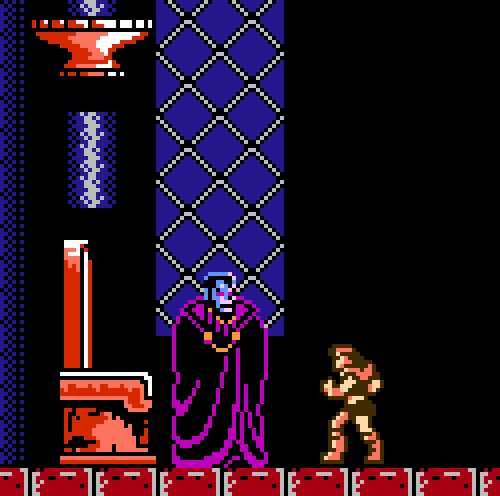
Bosses are much harder in the NES version altogether. They do more damage, have more health, and make use of more sophisticated attack patterns. Considering bosses are actually fairly easy in the Japanese release, this ends up being a point in favor of Dracula’s Curse over Akumajou Densetsu. Castlevania III has great boss fights that test your mechanical skills in fun and tense environments. Increased difficulty makes each battle as memorable as it should be. The game introduces the series’ first boss gauntlet, pitting you against two Mummies, a Cyclops, and a hulking demon. The Bone Dragon King escapes halfway through the fight, forcing you to race against the rising tide to get to the second half. Everything culminates with an unforgettable three-phase Dracula duel that closes out Castlevania’s tenure on the NES/Famicom perfectly.
At the end of the day, both releases have their benefits and appeal to different audiences. Akumajou Densetsu is better for newcomers who don’t want to rip their hair out and anyone who simply craves a less demanding playthrough. Dracula’s Curse is ideal for veterans who have mastered the core experience but want something harder and players who love an old-school challenge. Renters in the 90s may have suffered, but Castlevania III is better off for having an easier and harder version.
“After this fight the Belmont name shall be honored by all people.”
– Castlevania III: Dracula’s Curse, Solo Trevor Ending
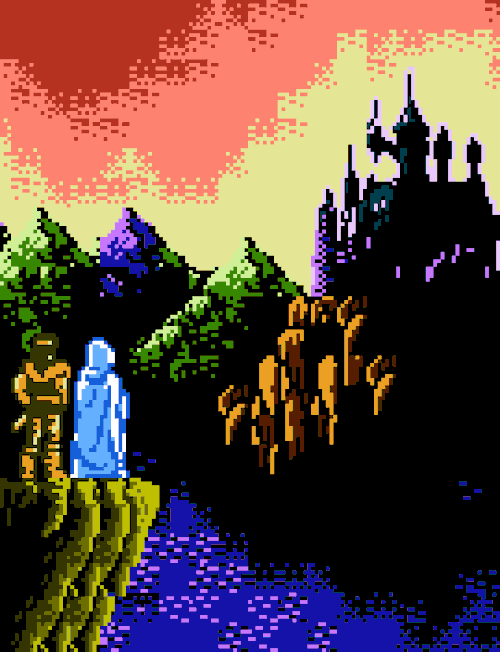
No matter which version you play, what paths you pick, or which route you take to Dracula’s Castle, Castlevania III is an engrossing playthrough from top to bottom. The build-up to Dracula’s castle makes the final set of stages feel epic in scope, the capstone of a long journey well fought. There are four endings, one for each character pairing and for going it alone as Trevor. Each ending offers a brief glimpse into the cast’s lives after their victory. Sypha and Trevor fall in love. Grant dedicates himself to rebuilding Wallachia. Alucard grapples with the guilt of killing his father. And honor is brought back to the Belmont name. Regardless of who you make it to Dracula with, your playable characters watch as the Count’s castle crumbles to ruins and the sun shines on Transylvania.
Castlevania has had a cinematic quality since day one, but Dracula’s Curse is on another level entirely. Detailed sprites and backdrops, beautiful music, and fluid animations immerse you in a gothic hellscape you’ll never want to escape from. The level design is as demanding as it is engaging, rewarding players who put in the effort to mastering the controls with one of the best platformers in the genre. Branching paths and multiple play styles will keep you coming back for more long after your first complete playthrough. Dracula’s Curse is 8-bit gaming at its best: creative, inspired, and fun. Whether on the Famicom or NES, Castlevania III is nothing short of a masterpiece.

-

 Features3 weeks ago
Features3 weeks agoFarewell to a Beloved 13-Year-Old Isekai Anime That Brought Us Endless Laughter
-

 Technology3 weeks ago
Technology3 weeks agoGamification and Productivity: What Games Can Teach SaaS Tools
-

 Features3 weeks ago
Features3 weeks agoThis Upcoming Romance Anime Might Just Break the Internet; Trailer Just Dropped!
-

 Features2 weeks ago
Features2 weeks agoDon’t Watch These 5 Fantasy Anime… Unless You Want to Be Obsessed
-

 Culture3 weeks ago
Culture3 weeks agoIs the Gaming Industry Killing Gaming Parties?
-

 Features4 weeks ago
Features4 weeks agoWait, What?! Tom & Jerry Just Turned Into an Anime and It’s Glorious!
-

 Features1 week ago
Features1 week ago“Even if it’s used a little, it’s fine”: Demon Slayer Star Shrugs Off AI Threat
-

 Game Reviews3 weeks ago
Game Reviews3 weeks agoCall of Duty and the Myth of Military Realism: Tactical or Just Tacticool?
-

 Technology3 weeks ago
Technology3 weeks agoDigital Cash: For Gamers Who Don’t Ask Permission?
-

 Guides4 weeks ago
Guides4 weeks agoHow to Earn and Spend Diamonds in Mobile Legends
-

 Technology4 weeks ago
Technology4 weeks agoDiscover the Top PDF Drive Tool Today
-

 Game Reviews2 weeks ago
Game Reviews2 weeks agoHow Overcooked! 2 Made Ruining Friendships Fun












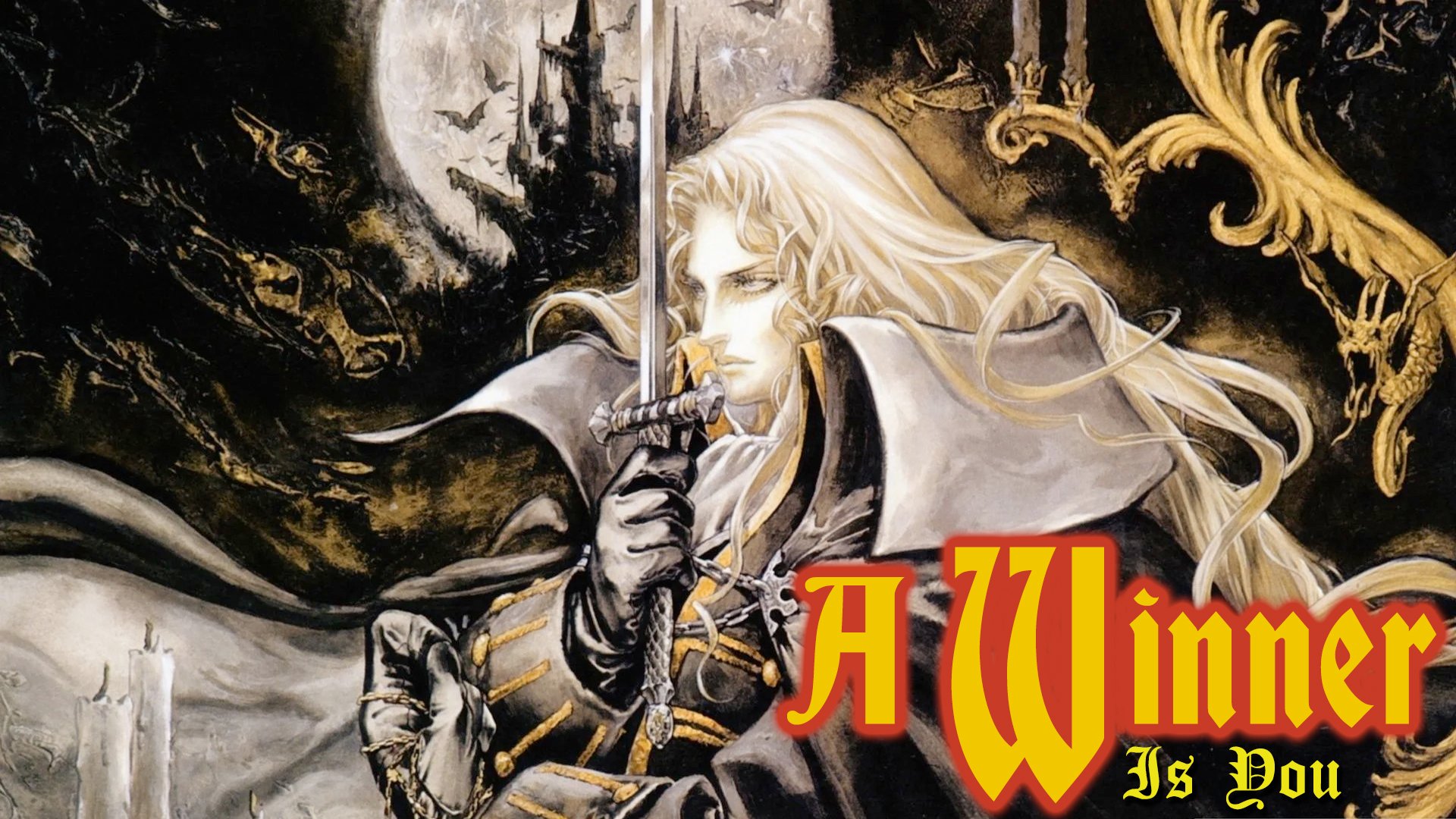










Robert
July 11, 2022 at 11:27 pm
All games with character creation mostly From Software games , my default name is Alucard.